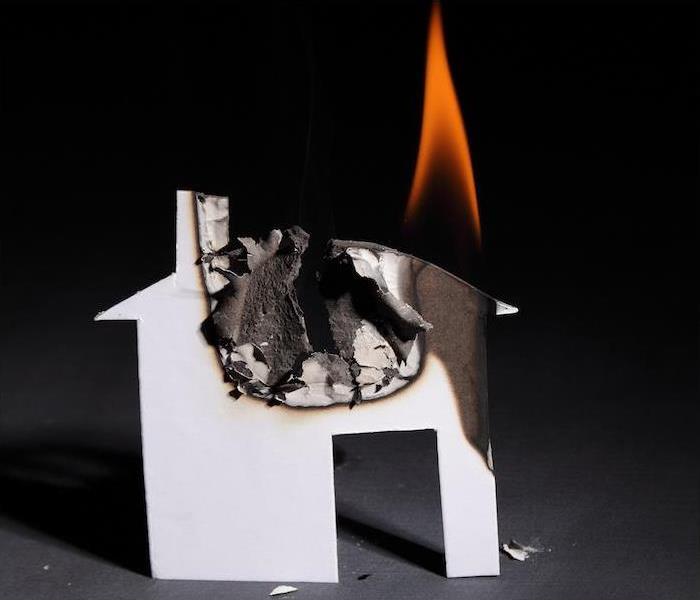The Shape that Depicts Every Fire | SERVPRO® of Cudahy/St. Francis
1/30/2022 (Permalink)
 If your home or business has any damage, SERVPRO of Cudahy/St. Francis is ready around the clock to help you recover.
If your home or business has any damage, SERVPRO of Cudahy/St. Francis is ready around the clock to help you recover.
Fires take many forms, but each one has a shape—a representative shape, anyway.
Every fire can be described with something called the fire tetrahedron—a four-sided triangle, each side of which represents a specific element possessed by every fire.
In fact, all fires require all sides of the tetrahedron working together. This is how a fire lives, and it also becomes our methodology for making sure a fire dies.
Fuel. All fires consume something. From oil or paper to wood or plastics, fires need some proper material to burn.
Heat. Any flammable substance also has to reach a temperature high enough to make it combust. It may only take a spark if the other elements align, but the flash point must be reached in order for a flame to occur.
Oxygen. The reason home fires that take place while people are sleeping result in so many fatalities is that in addition to the consumption of fuel sources like the wood in the house, fires also consume the oxygen in the inside air. This leaves sleeping individuals breathing air that’s low on O2 and high on carbon monoxide, which means an unfortunate number of them never wake at all.
Chemical Chain Reaction. You can thank the chain reaction for transforming what was formerly the fire triangle into a 3-D shape. In recent years, the chain reaction was awarded an equal part in fire composition charts because of the necessity of its presence and continuation to keep a fire going.
Cool it. The fuel source has to stay above the previously mentioned flash point temperature in order to stay burning. Cooling the fuel with water or other substances brings a thermal balance to the material that won’t allow it to rise back above that point.
Smother it. One way to stop a fire in its tracks is to separate it from the oxygen it needs, and the quickest way to do that is to put something over it, covering it with something nonporous that will keep air from circulating.
Starve it. Fires have to eat, and if they can’t eat, they diminish and die. If a fire’s fuel source is removed, or if it’s cut off from reaching fresh fuel, precisely that will happen.
Interrupt the chain reaction. Anything that can disrupt the swirl of activity between the other three components will throw the fire off its game and make it lose steam (so to speak). A certain set of gases is quite good at this, and it has the benefit of being “clean,” meaning it’s environmentally friendly and doesn’t leave harmful or wet residue, making these gases ideal for electrical fires.
If the fire tetrahedron makes a wreck of your home or business, we’re ready around the clock to help you recover. Contact SERVPRO anytime for fast, thorough cleanup and recovery after a fire.

 24/7 Emergency Service
24/7 Emergency Service